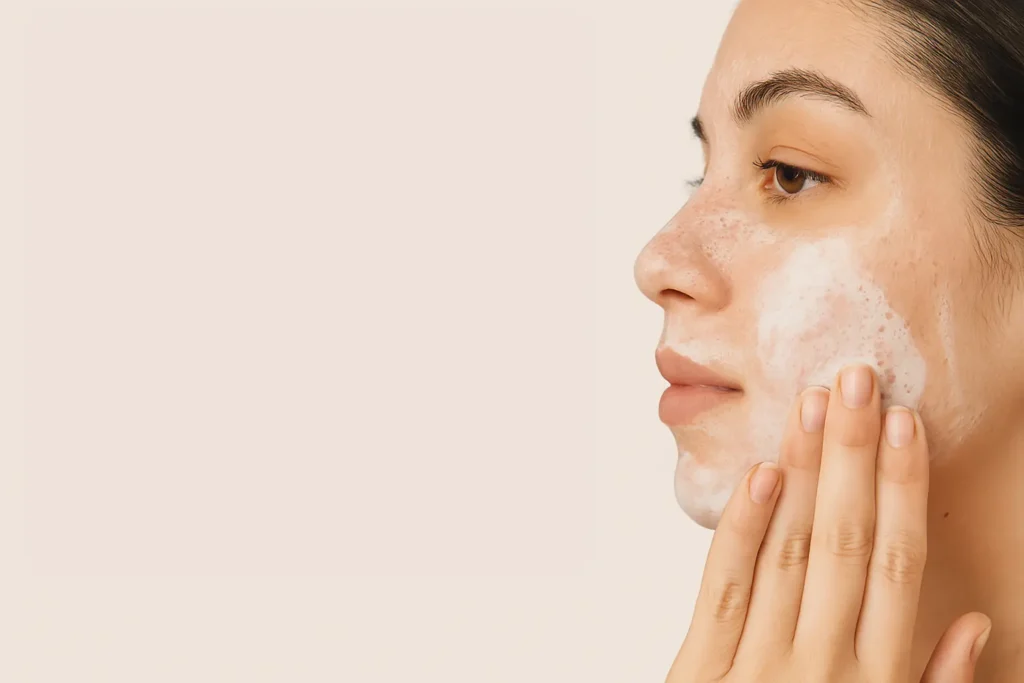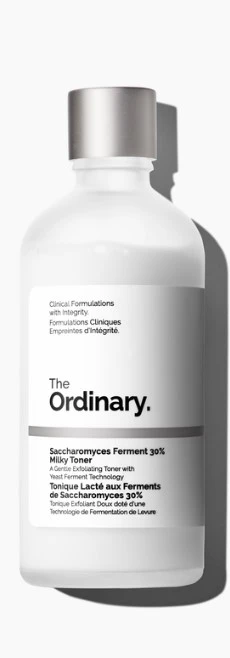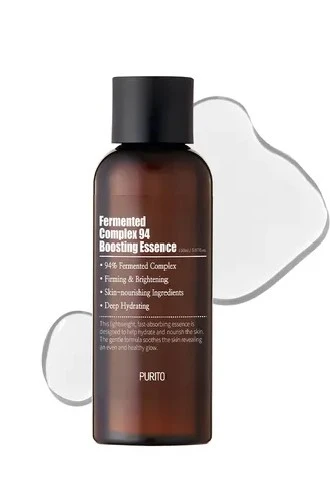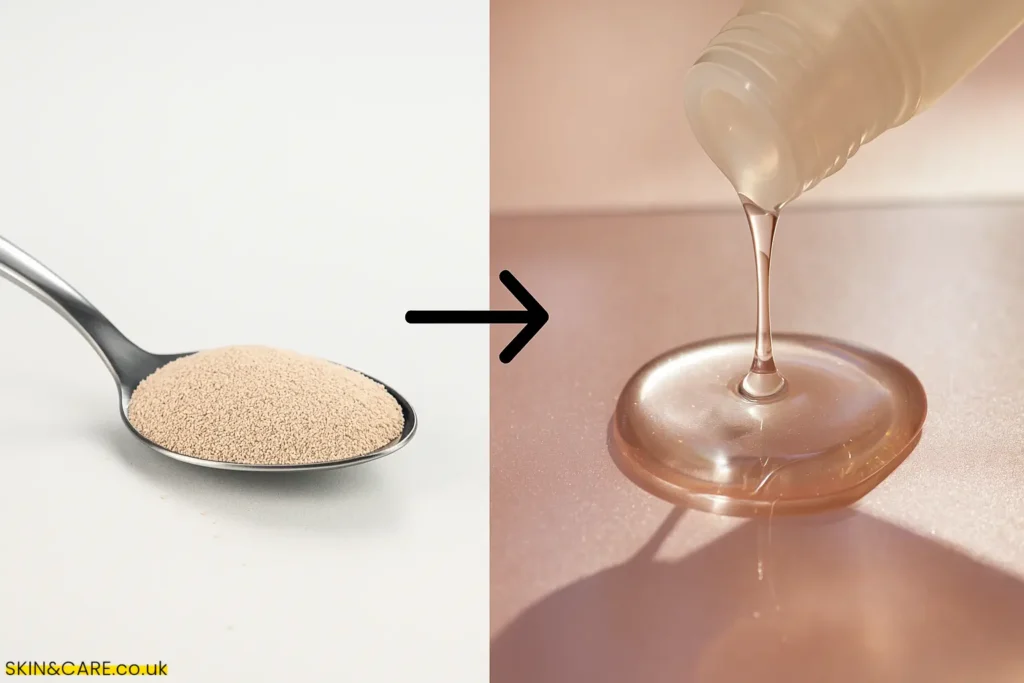While most of us associate yeast with baking bread or brewing beer, there’s a specific type that’s quietly becoming one of the most intriguing ingredients in modern formulations: Saccharomyces cerevisiae.
Through the process of fermentation, this humble microorganism is transformed into something quite extraordinary: Saccharomyces ferment.
The ingredients derived from Saccharomyces cerevisiae, such as Saccharomyces lysate and Saccharomyces ferment, have the ability to soothe irritation, strengthen the skin barrier, and support overall skin health. While they work primarily at the skin’s surface, their effects can support cellular processes that contribute to healthier-looking skin over time.
But since these two ingredients are often mentioned interchangeably, it’s worth breaking down what sets them apart before diving deeper into the benefits of Saccharomyces ferment.
Saccharomyces Ferment vs. Saccharomyces Lysate: What’s the Difference?
Both Saccharomyces ferment and Saccharomyces lysate come from the same yeast species, Saccharomyces cerevisiae. What sets them apart is how they’re processed, and that difference impacts what they can do for your skin.
Saccharomyces Ferment
This is the byproduct of a fermentation process where the yeast is cultivated in a nutrient-rich environment. This fermentation process produces a liquid (the ferment filtrate) that is rich in compounds like amino acids, vitamins, and enzymes. These compounds have the ability to hydrate, soothe, and protect the skin, which is why they’re used in hydrating and brightening skincare products.
Saccharomyces Lysate
This version is made by breaking open the yeast cells (a process known as lysing) to extract their inner components: proteins, peptides, and more. This lysate contains proteins, peptides, and other cellular materials that can help support skin repair, balance the skin’s microbiome, and provide antioxidant protection.
In short:
- Saccharomyces ferment is the liquid byproduct of the fermentation process, containing what the yeast produces.
- Saccharomyces lysate is the extract of the yeast’s internal contents after the cells are broken open.
What Are The Benefits of Saccharomyces Ferment?
The bioactive nutrients produced during the yeast fermentation process enable Saccharomyces ferment to deliver a range of skin benefits.
Here’s how it works for your skin:
1. Brightens and Boosts Radiance
The amino acids and peptides in Saccharomyces ferment help even out skin tone and promote luminosity. These molecules encourage gentle cell turnover and support skin renewal, helping to fade dullness and boost overall glow.
2. Hydrates and Retains Moisture
Thanks to B vitamins (especially B5, also known as panthenol) and a wealth of amino acids, this ingredient supports the skin’s natural moisturising factors (NMFs). It also helps improve the skin’s ability to absorb key minerals like zinc and magnesium, nutrients that play a crucial role in maintaining hydration and barrier function.
3. Antioxidant Protection
Fermentation enriches the ingredient with ferulic acid, selenium, and other natural antioxidants. These help neutralise free radicals caused by UV rays and pollution, reducing oxidative stress and supporting a more youthful appearance.
4. Soothes and Strengthens the Skin Barrier
Beta-glucan, a polysaccharide in Saccharomyces ferment, has the ability to calm irritation and enhance barrier function. It works alongside vitamin B complex to reinforce skin resilience and soothe inflammation, making it ideal for sensitive or reactive skin types.
5. Supports Anti-Ageing
Peptides and antioxidants in the ferment stimulate collagen production and improve elasticity, reducing the appearance of fine lines and wrinkles. The anti-inflammatory effects of beta-glucan also help slow the visible signs of ageing over time.
6. Enhances Absorption of Other Ingredients
The enzymes in Saccharomyces ferment provide gentle exfoliation by helping to dissolve dead skin cells on the surface. This creates a smoother canvas and enhances the penetration of serums and treatments layered on top.
Is Saccharomyces Ferment a Moisturiser or an Exfoliant?

Knowing that Saccharomyces ferment has both moisturising and exfoliating properties, does that affect how well it works in skincare? More importantly, how can a single ingredient hydrate the skin without unintentionally exfoliating it?
The answer lies in how the ingredient is formulated.
Saccharomyces Ferment is incredibly versatile, and its function in a product depends on a few key factors: its concentration, the pH of the formula, and the ingredients it’s combined with.
Does Having Both Moisturising and Exfoliating Properties Reduce its Efficacy?
The answer is no.
Its versatility means Saccharomyces ferment can be tailored to hydrate or exfoliate, depending on the concentration, the formula’s pH level, and what other ingredients it’s paired with.
In Moisturisers:
When used in hydrating creams or toners, Saccharomyces ferment is typically filtered to remove active enzymes. What’s left is a concentrate of skin-soothing amino acids and beta-glucans. These formulas are usually focused on barrier repair and moisture retention.
Out of ideas on what moisturisers to use on your oily skin? Try these.
In Exfoliating Products:
On the flip side, exfoliating products may contain a higher concentration of Saccharomyces ferment or combine it with exfoliating acids like lactic or glycolic acid. These formulas tend to be more acidic, which helps activate the ferment’s natural enzymes for a gentle resurfacing effect.
But if you’re looking for something stronger and are unsure which exfoliant suits your skin, check out our guide on choosing the right exfoliant for your skin type. And if you want to make sure you don’t go overboard, don’t miss our article on how to avoid over-exfoliation.
Bottom line: Just because Saccharomyces ferment can exfoliate doesn’t mean it always does. If you’re using a moisturiser with this ingredient, it’s likely focused on hydration, not exfoliation. You’re getting the calming, plumping benefits without any unexpected peeling.
How to Try Saccharomyces Ferment in Your Routine
Now that we’ve broken down what Saccharomyces ferment does and how it can function differently depending on the formula, let’s look at two products that showcase its versatility. Whether you’re looking to gently exfoliate or deeply hydrate, these options are excellent starting points:

The Ordinary Saccharomyces Ferment 30% Milky Toner – A gentle exfoliating toner with 30% Saccharomyces Ferment, designed to refine texture and boost radiance while being kind to the skin.
| Benefits: -Gently exfoliates for smoother, more hydrated and radiant skin. -Smooths skin texture and reduces the appearance of textural irregularities -Encourages brighter, more radiant skin -Gives all-day lasting hydration -Promotes a stronger skin barrier after 8 hours* -Reduces the look of dark spots |
| Key Ingredients: Saccharomyces Ferment, Squalane |
| Ingredients You May Not Like: – |
PURITO B5 Panthenol Re-barrier Cream – A replenishing moisturiser that pairs Saccharomyces Ferment with panthenol to reinforce the skin barrier, soothe sensitivity, and lock in hydration.
| Benefits: – Brighter and More Even Skin Tone: The 94% fermented complex and 3% niacinamide work synergistically to brighten a dull complexion and restore the skin’s natural radiance. – Firmer Skin and Reduced Wrinkles: It helps to improve skin firmness and significantly reduces the appearance of wrinkles and fine lines. – Intense Hydration and Balanced Skin: The formula is designed to deeply hydrate the skin while restoring its optimal water/oil balance, leading to healthy and comfortable skin. – Soothing for Dry and Sensitive Skin: Infused with naturally-derived ingredients, it calms and provides much-needed hydration to dry and sensitive skin, alleviating discomfort. |
| Key Ingredients: Lactobacillus/Rice Ferment, Morus Alba Root Extract, Niacinamide. |
| Ingredients You May Not Like: – |

Before You Leave
If you’re impressed by what Saccharomyces ferment can do but aren’t quite sure where it fits into your routine, check out our article on How to Choose Skin Care Products based on your skin type.
It walks you through how to build a skincare routine tailored to your skin type, helping you understand where multitasking ingredients like this one make the most impact, whether you’re focused on hydration, gentle exfoliation, or barrier repair.
